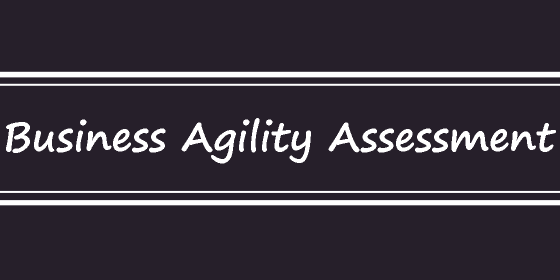Business Agility Assessment

A Business Agility Assessment is a systematic evaluation of an organization’s agility and its ability to respond effectively to changes in the business environment. The assessment examines various dimensions of the organization, including its processes, culture, leadership, and technology, to identify strengths, weaknesses, and opportunities for improvement related to agility.
Key points about the Business Agility Assessment include:
- Purpose: The primary purpose of the assessment is to gauge the organization’s current level of business agility. It helps leaders and teams understand how well they can adapt to market changes, customer demands, and emerging opportunities.
- Comprehensive Evaluation: The assessment typically covers multiple aspects of the organization, such as its strategic planning, decision-making processes, organizational structure, team collaboration, communication, innovation, customer focus, and the use of Agile methodologies and practices.
- Assessment Frameworks: Various assessment frameworks and models are used to evaluate business agility, such as the Business Agility Health Radar, Business Agility Maturity Model, and others. These frameworks provide a structured approach to the assessment process.
- Data Collection: Business Agility Assessments involve data collection through surveys, interviews, workshops, and observations. Data is gathered from employees, leaders, and stakeholders at different levels of the organization.
- Analysis and Recommendations: The data collected is analyzed to identify patterns, trends, and areas that require attention. Based on the analysis, the assessment team provides recommendations and action plans to improve agility.
- Tailored Approach: Business Agility Assessments can be tailored to the specific needs and goals of the organization. Some assessments may focus on Agile practices and methodologies, while others may encompass broader organizational transformation.
- Continuous Improvement: Business Agility is not a one-time achievement but an ongoing journey. Organizations may conduct regular assessments to track their progress, identify new challenges, and continuously improve their agility.
- Engagement of Stakeholders: Successful assessments require the active involvement and commitment of leadership and stakeholders. They play a crucial role in implementing the assessment findings and driving the necessary changes.
Business Agility Assessments are valuable tools for organizations seeking to become more adaptable, innovative, and responsive in a rapidly changing business landscape. They provide insights into the organization’s strengths and weaknesses, guide decision-making, and support the development of strategies for sustainable success.
It’s important to note that the assessment itself does not guarantee increased agility. The real value lies in taking action based on the assessment findings, fostering a culture of continuous improvement, and making the necessary changes to become a truly agile organization.